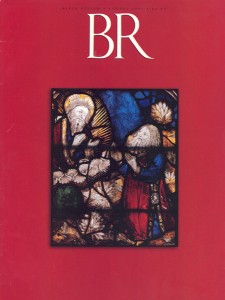
“Read the fine print,” the lawyers tell us. They’re usually talking about contracts, but the warning also applies to the fine-print footnotes in some editions of the Bible—such as those for the New Testament in the Oxford edition of the New Revised Standard Version (NRSV),a which will serve as our examples. These footnotes reveal some of the difficult textual and interpretive decisions made by modern editors and translators.
Take the first verse in Mark’s Gospel: “The beginning of the good news of Jesus Christ, the Son of God.” A footnote at the end of this verse tells us: “Other ancient authorities lack the Son of God.” The phrase “Other ancient authorities” customarily signals the existence of ancient manuscript copies that have a different reading from the one printed in the text.
From earliest times, biblical manuscripts were transmitted by handmade copies. In fact, the word manuscript derives from the Latin words for hand and writing.
Already a library member? Log in here.
Institution user? Log in with your IP address.

